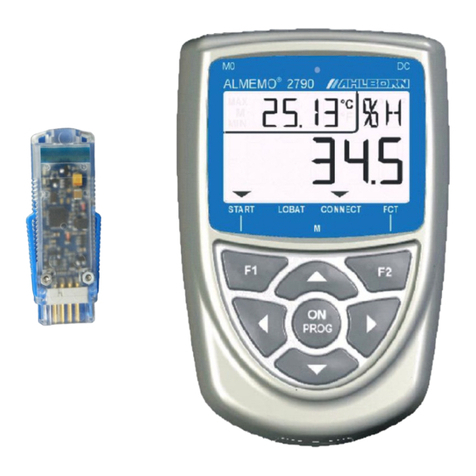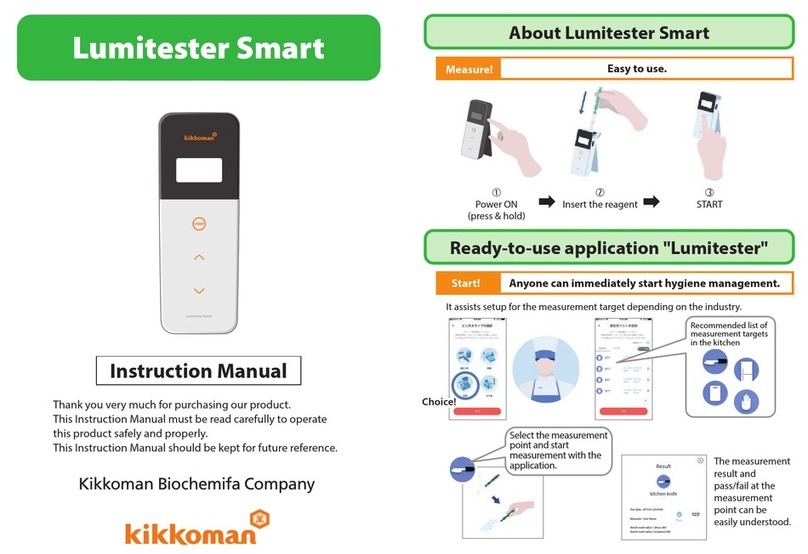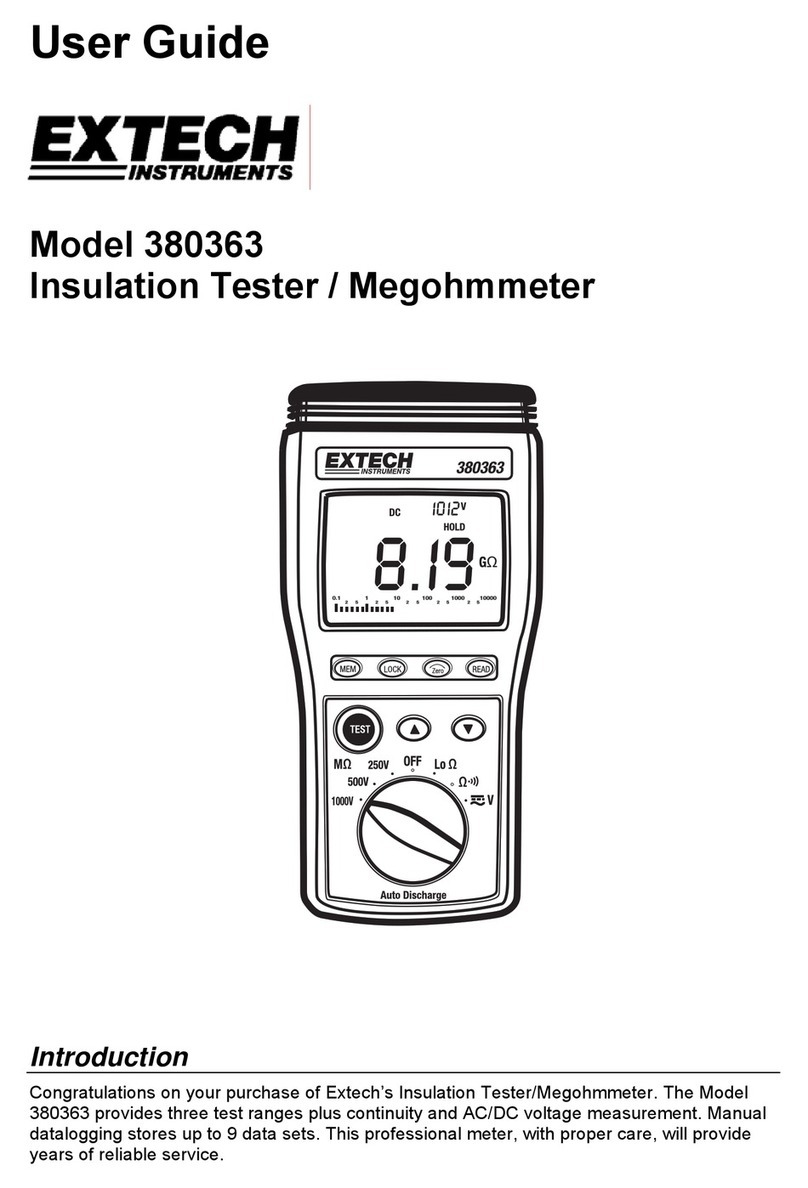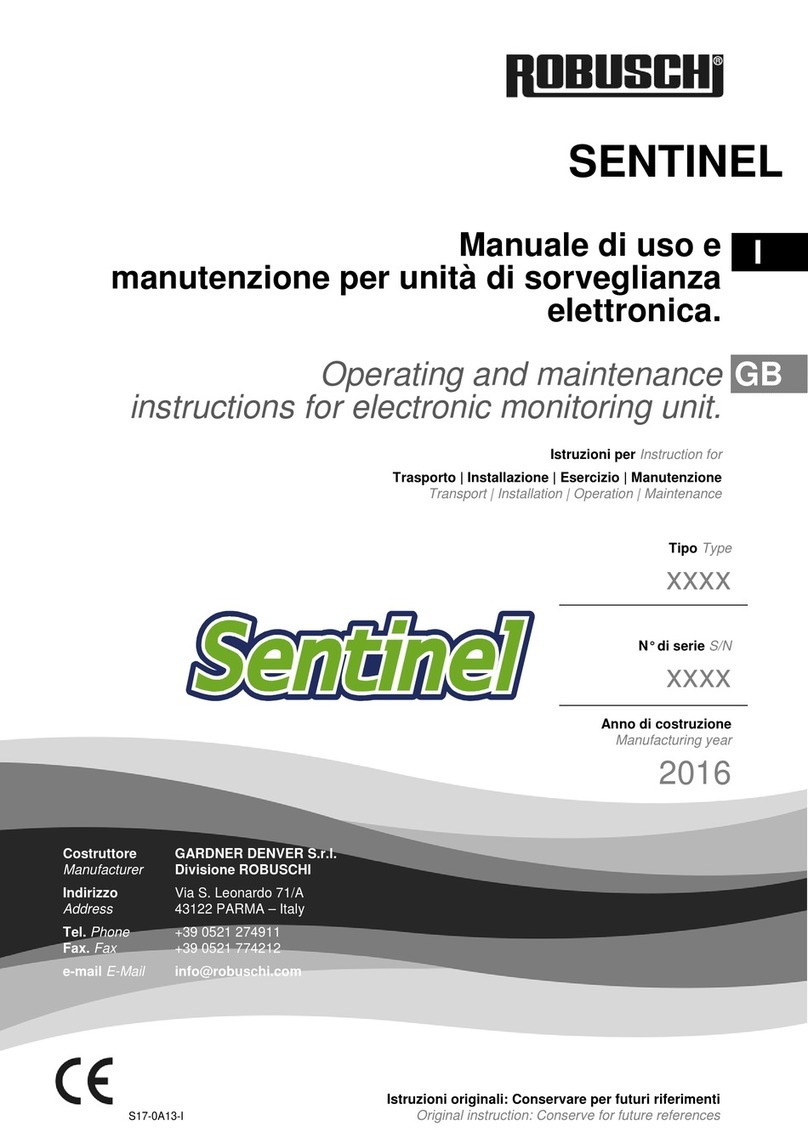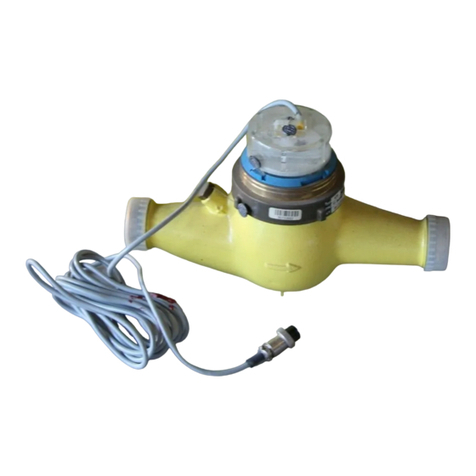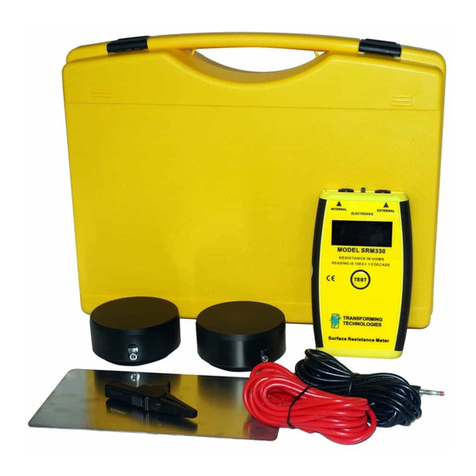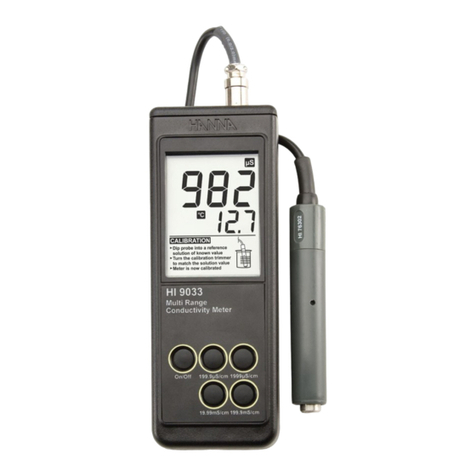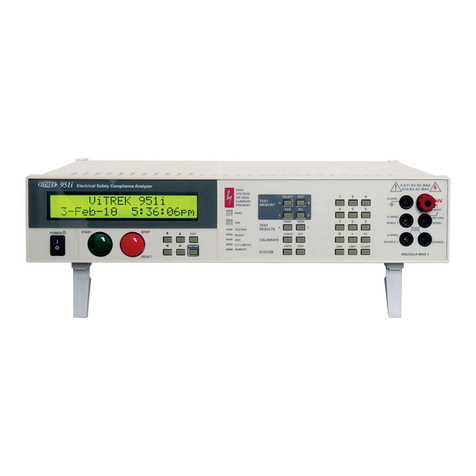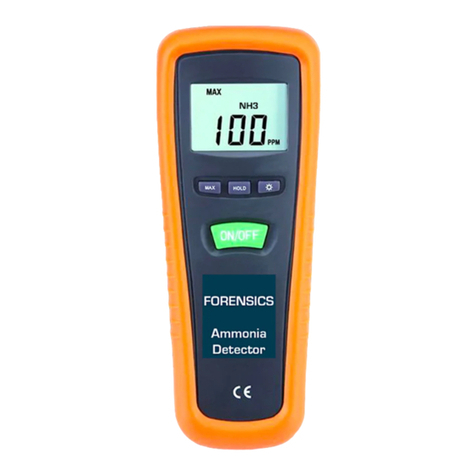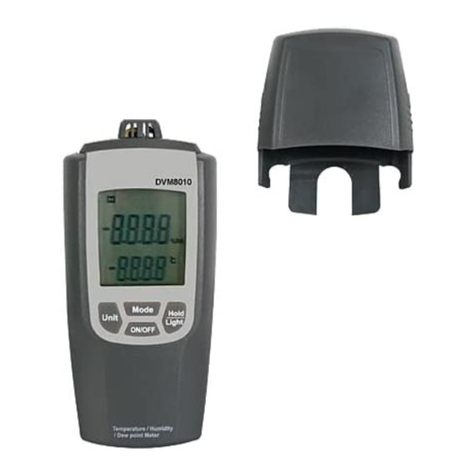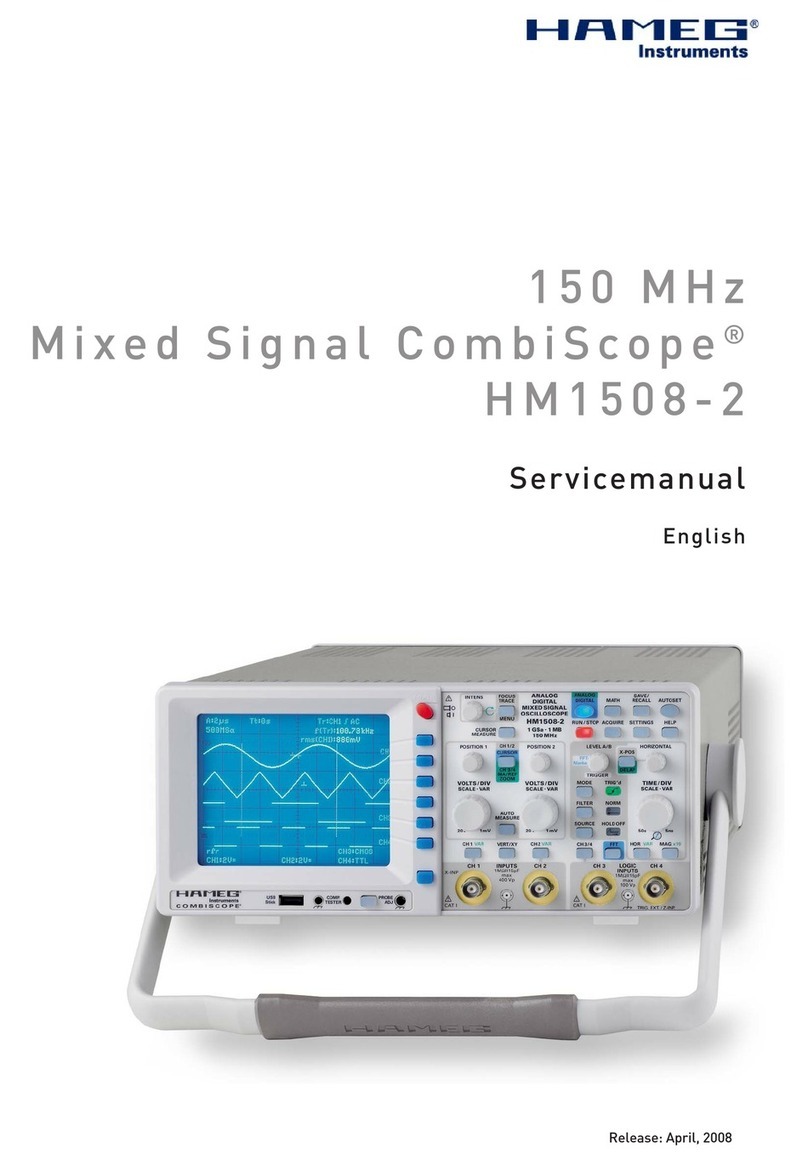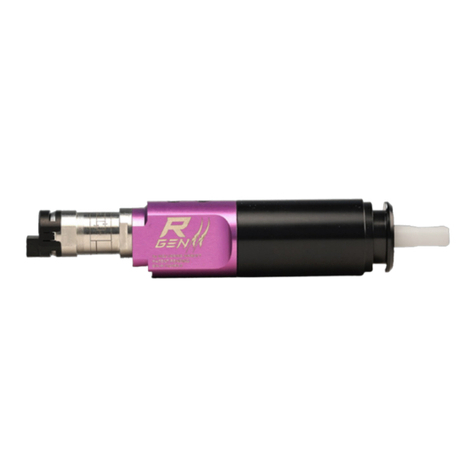
Sensor Calibration
To do a complete calibration, three steps are required. The analyzer must first be zeroed in clean water.
Secondly, a sample/snapshot reading should be taken in a normal representative water sample. The sample
water can then be given a laboratory analysis, and the span of the analyzer can be adjusted by recalling the
snapshot and matching the reading to the analysis. As long as the lenses are kept clean, frequent
recalibration should not be necessary. Every six months should be more than adequate for a complete
calibration. The Model 3150 allows the operator to save both a low range (MLSS/CAL1) and a high range
(RASSS/CAL2) span calibration. The Model 3150 will use the MLSS/CAL1 or RASSS/CAL2 span calibrations
as selected by the measure mode.
Any optically based device for measuring suspended solids should only be span calibrated against a
typical sample of the actual process water being measured. Synthetic laboratory standards will add
unnecessary inaccuracies to the system and are not recommended. The Model 3150 utilizes its
microprocessor memory in a unique way to make span calibration as easy and accurate as possible. This
calibration is performed as a two step process. First, the SNAPSHOT function of the analyzer is used to store
actual process conditions to the instrument’s memory. Later, when standard laboratory analysis results are
available for those previous conditions, the analyzer’s SPAN function will recall the stored value and allow the
user to adjust the span value accordingly.
The range of operation of the Model 35 sensor is 0-30,000 mg/l total suspended solids. Within this range,
accuracy and repeatability are only specified over a range of +/- 50% of the user’s point of calibration.
Accuracy will be +/- 5% of the current reading or +/- 100 mg/l, whichever is greater. Repeatability will be +/-
1% of the current reading or +/- 20 mg/l, whichever is greater.
The range of operation of the Model 35L sensor is 0-1500 mg/l total suspended solids. Within this range,
accuracy and repeatability are only specified over a range of +/- 50% of the user’s point of calibration.
Accuracy will be +/- 5% of the current reading or +/- 2 mg/l, whichever is greater. Repeatability will be +/- 1%
of the current reading or +/- 2 mg/l, whichever is greater.
Sensor Zero
Each TSS sensor will have a unique zero reference. This calibration mode will calculate and store the
zero reference for the current sensor.
Select the "Sensor Zero" option from the calibrate menu using the up and down arrow keys. Press the
"ENTER" key. Submerge the sensor in clean water. It is important that the water used to zero the sensor be
clean. At the very least use potable water for this, and distilled water is even better. Do not use plant process
water of any type. With the sensor submerged in clean water, wait about 15 minutes and then press
"ENTER". The analyzer will take about 15 seconds to zero. The display will return to the calibrate menu
automatically when it is finished. Press the "MENU" key to exit or use the up and down arrow keys to select
another calibration mode.
Snapshot
This calibration mode simply stores a reading in a special memory location within the analyzer. The
operator should take a physical sample of the process water from the same location so that it can be analyzed
using standard laboratory techniques to determine suspended solids concentration. When the lab analysis is
complete, this stored reading can be recalled in the SPAN mode. Matching the stored reading to the lab
analysis adjusts the span of the analyzer.



















